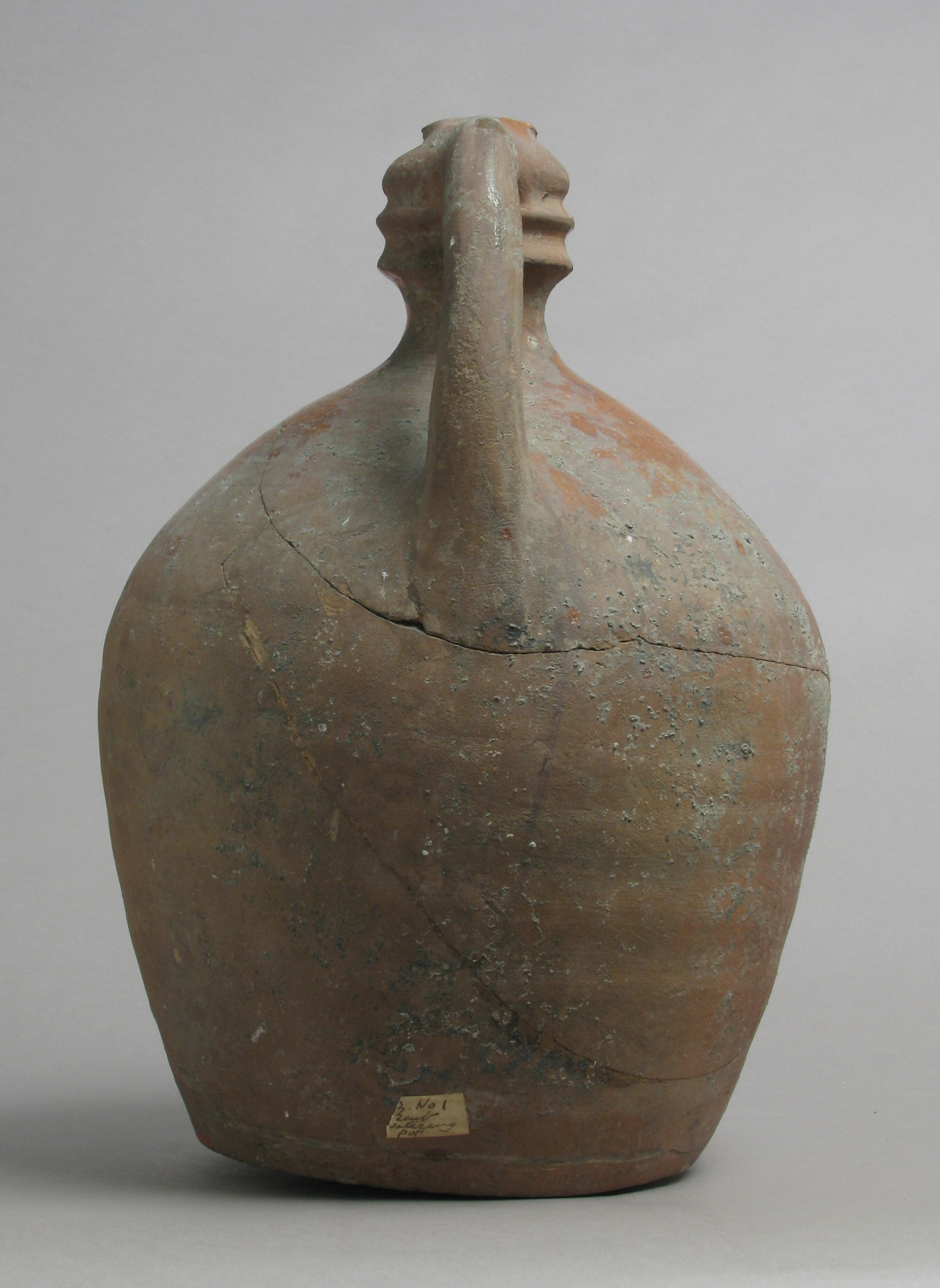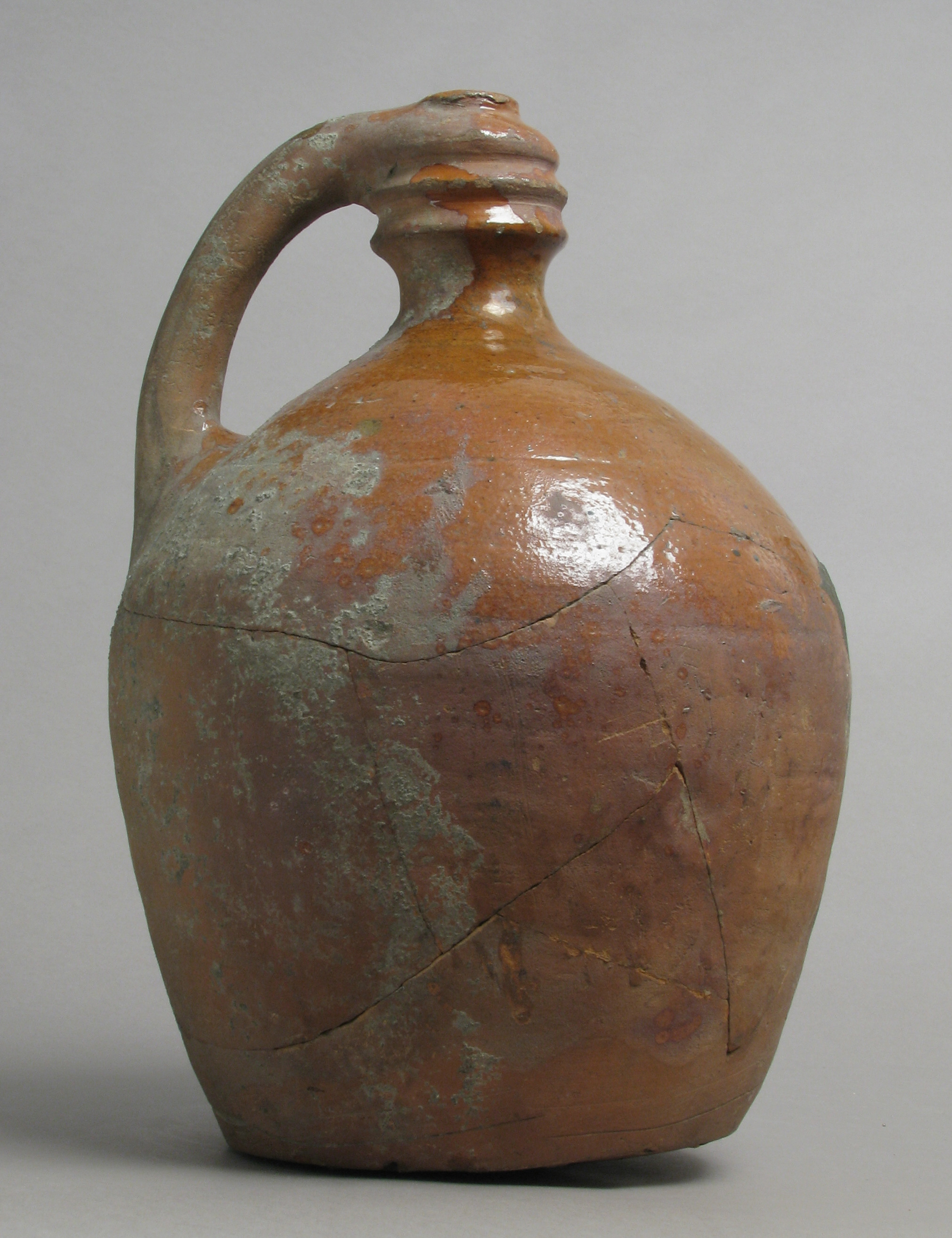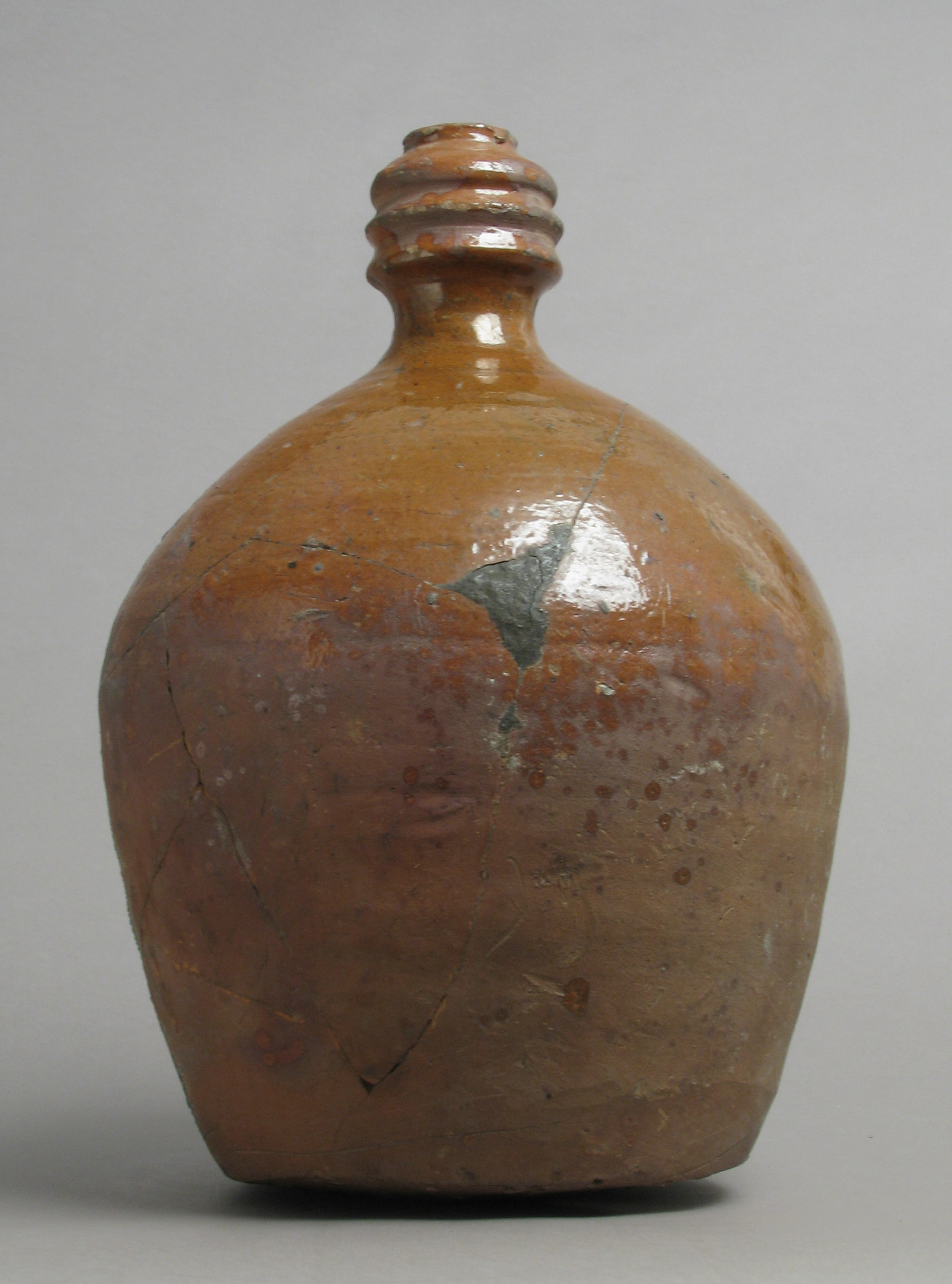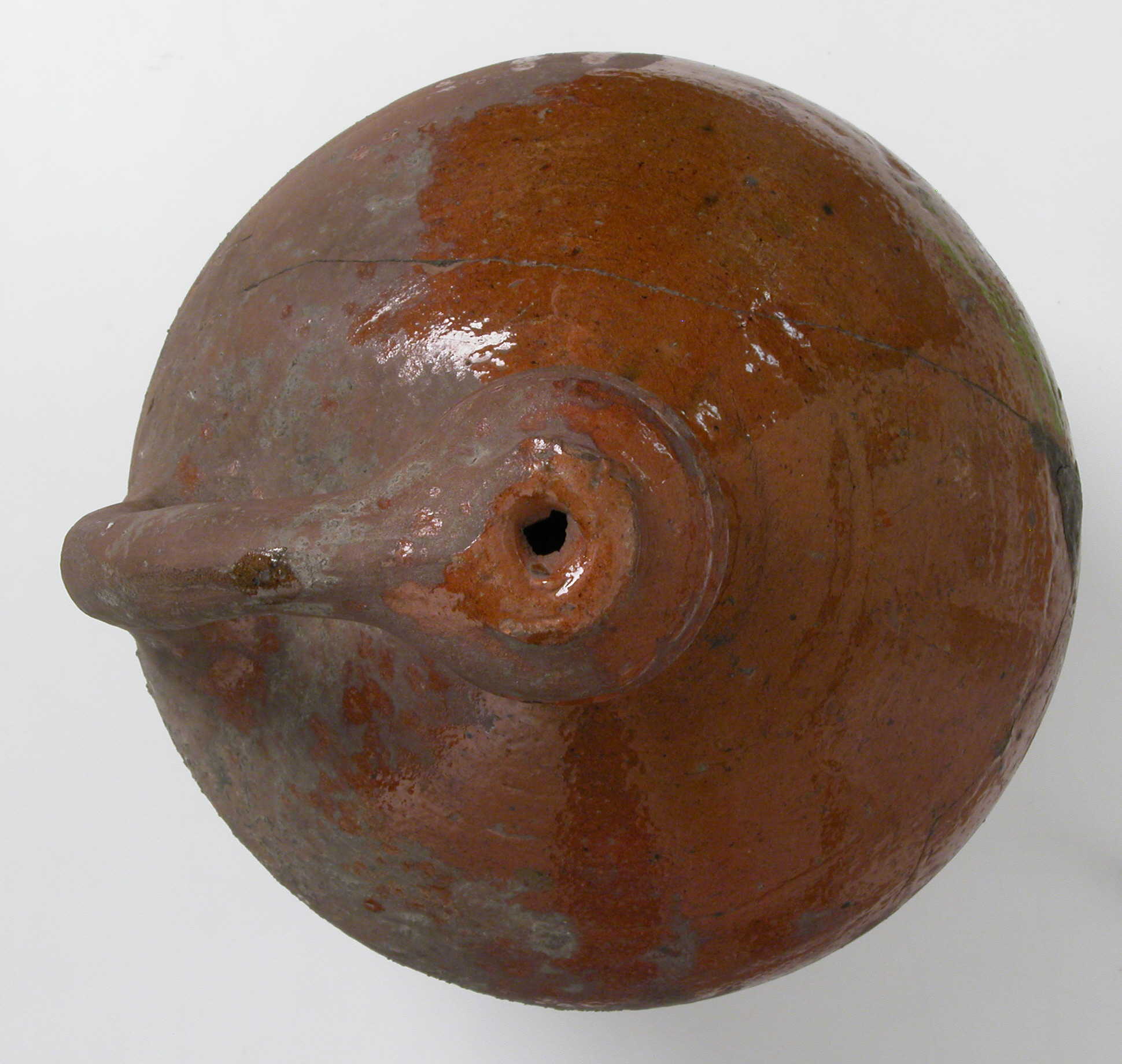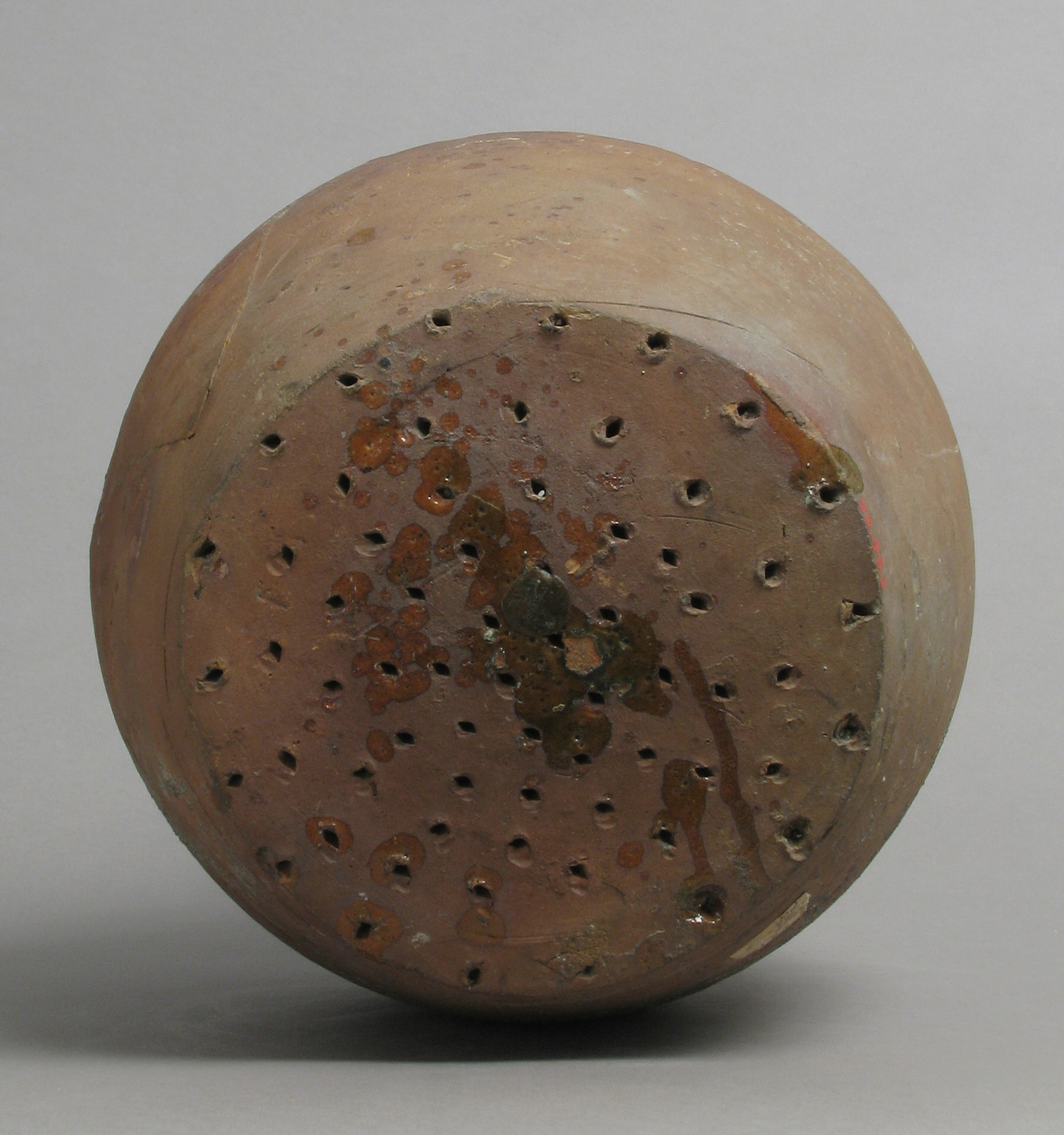Pot, Watering
Not on view
Two types of watering pots were familiar to the medieval household, of which the present example, known as a chantepleure, was the more usual. This pot, derived from a form known in antiquity, is shaped like a jug. The handle arching from the body of the vessel to the very top of the neck is so placed that the thumb can easily cover the small opening. The bottom of the vessel is perforated with numerous holes and serves as a sprinkler. The pot was immersed in water until filled, and once the thumb was placed over the hole the water would not flow. As soon as the thumb was lifted, however, the water would sprinkle out of the bottom. The other type of watering pot, the English versions of which were primarily produced in Sussex, more closely resembled the modern type, having a sprinkler head on a pouring spout attached to a canister-shaped vessel. Watering pots were used to tend not only to kitchen gardens but indoor potted plants as well. This example was excavated in Cannon street, London, but its origin of manufacture is uncertain.
Due to rights restrictions, this image cannot be enlarged, viewed at full screen, or downloaded.
This artwork is meant to be viewed from right to left. Scroll left to view more.


